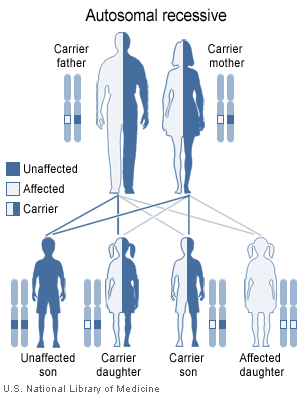Methemoglobinemia pathophysiology
|
Methemoglobinemia Microchapters |
|
Diagnosis |
|---|
|
Treatment |
|
Case Studies |
|
Methemoglobinemia pathophysiology On the Web |
|
American Roentgen Ray Society Images of Methemoglobinemia pathophysiology |
|
Risk calculators and risk factors for Methemoglobinemia pathophysiology |
Editor-In-Chief: C. Michael Gibson, M.S., M.D. [1]
Overview
Pathophysiology
Congenital (Hereditary) Methemoglobinemia
There are three main congenital conditions that lead to methemoglobinemia: 1. Cytochrome b5 reductase deficiency and pyruvate kinase deficiency 2. G6PD deficiency 3. Presence of abnormal hemoglobin.
Both cytochrome b5 reductase deficiency and pyruvate kinase deficiency can lead to NADH deficiency which in turn will lead to decreased ability to remove MetHb from the blood. Cytochrome b5 reductase deficiency is an autosomal recessive disorder with at least 2 forms that we know of. The most common form, is the Ib5R deficiency, where cyt b5 reductase is absent only in RBCs, and the levels of MetHb are around 10% to 35%. The second type, which is much less common, is the IIb5R, where MetHb varies between 10% and 15% and the cyt b5 reductase is absent in all cells. This form is associated with mental retardation, microcephaly, and other neurologic problems. The lifespan of the affected individuals is greatly affected and patients usually die very young.
Congenital deficiency in G6PD can lead to decreased levels of NADPH and thus compromising the function of the diaphorase II enzyme system.
Abnormal hemoglobins like Hb M, an autosomal dominant condition, can also lead to methemoglobinemia. Here we observe not only impaired oxygen binding due to oxidation of iron to its ferric state (Fe3+), caused by amino acid replacement in the heme molecule, but also inability of the protective enzyme systems to reduce the iron to its normal ferrous state (Fe2+).

Acquired (Toxic or Acute) Methemoglobinemia
The acquired methemoglobinemia is significantly more common than the congenital one. It is associated with exposure to or use of oxidant drugs, toxins or chemicals, that cause acute increment in methemoglobin levels, which overwhelms the normal physiologic protective enzyme mechanisms. The most common agents are anesthetics like benzocaine, lidocaine, prilocaine (even in topical forms), antibiotics like dapsone (used for the treatment of Brown Recluse spider bites, Leprosy, ecc) trimethoprim, sulfonamides, nitrates (amynitrate), nitroglycerin (NG), aniline dyes, metoclopramide, chlorates and bromates.
Infants under 6 months of age are particularly susceptible to methemoglobinemia. The most common causes in this patient population are the ingesting of nitrates in drinking water, dehydration usually caused by gastroenteritis with diarrhea, sepsis and topical anesthetics like benzocaine and prilocaine. Nitrates ingestion is especially dangerous as nitrates used in agricultural fertilizers can often leak into the ground, thus contaminating well water. The Environmental Protection Agency (EPA) has set strict rules on the Maximum Contaminant Level (MCL) of nitrate as nitrogen in the water. The current EPA guidelines state that no more than 10 mg/L (or 10 parts per million) of nitrogen is safe in drinking water.